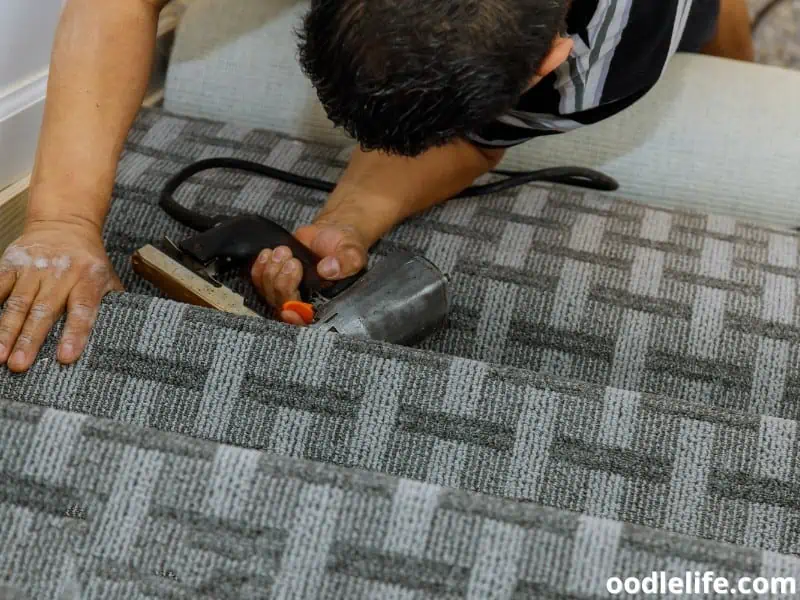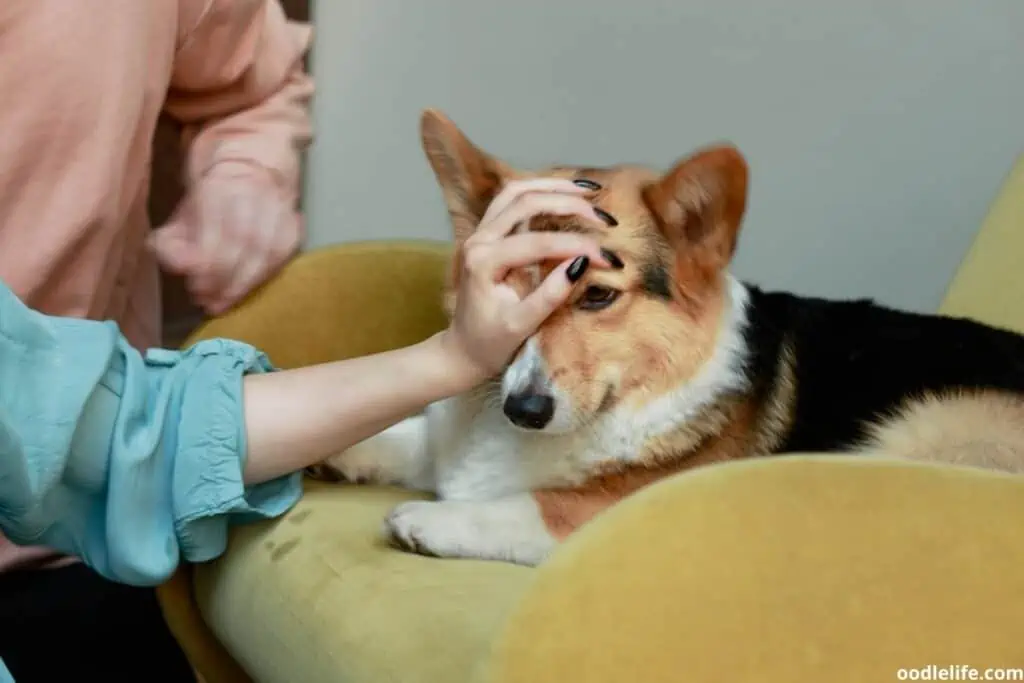Is Jumping Bad for Corgis? Decoding the Myths
Corgis are an adorable, small dog breed that are known for their unique physique and energetic nature. As a Corgi owner, it’s natural to wonder if allowing your pet to jump is harmful to their health. This article will discuss if jumping is bad for Corgis and provide insights on how to keep your furry friend safe and healthy.
While Corgis are known for their short legs and long bodies, their strength and agility may surprise you. That being said, their build does bring up concerns about potential strain on their spine, hips, and leg joints. Let’s explore the impact of jumping on Corgis, and how to avoid any potential health risks.

From understanding how their anatomy influences their ability to jump, to learning about preventative measures and alternatives to jumping, this article aims to equip you with the knowledge to keep your Corgi happy and healthy. In our discussion, we’ll share experts’ opinions, as well as real-life experiences of other Corgi owners. So, let’s dive into the world of Corgis and their love for jumping!
Age and Physical Development
Corgis are adorable dogs, known for their short legs and long bodies. When it comes to jumping, their age and physical development play a significant role.

A young Corgi puppy is all paws and fluff, not yet ready for the world of leaps and bounds. As they grow and reach around 6-8 months, their bones and muscles strengthen, gradually improving their physical abilities. However, beware of those cute little jumps as it might put a strain on their still-developing joints.
Now, adult Corgis possess enough muscle and stability to perform small jumps, but the unique size and proportions of their frame might still pose some challenges. Their short legs must work twice as hard, which can tire them out faster and lead to potential injuries. The elongated body, in particular, can be susceptible to spine issues when exposed to too much repetitive jumping action.
Despite these risks, it’s not all doom and gloom for Corgis! Smart Corgi owners can opt for some low-impact exercises, like swimming or using doggie stairs to help them reach their favorite spots. Wobbly Corgi-feet performance still brings some laughter and loads of “awws” without putting too much stress on their adorable little bodies.
So, remember, age and physical development matter when it comes to letting your Corgi jump – it’s important to plan their activities accordingly to keep them happy and healthy!
Impact of Jumping on Health
Jumping might be a fun activity for Corgis as they are naturally energetic and agile dogs. However, Corgis are a breed known for their long bodies and short legs. This combination can lead to potential health issues, especially related to their joints and spine.

One common issue in Corgis is hip dysplasia, a genetic disorder in these lovable pups. It can be exacerbated by high-impact activities such as jumping. When a Corgi jumps, the impact on its joints might contribute to the degeneration of its hip sockets, causing inflammation and pain.
Elbow dysplasia is another concern for Corgis. It results from abnormal growth and development of the elbow joint. Similar to hip dysplasia, jumping might aggravate the issue as their small limbs need to support their long body during the landing process.
Intervertebral disc disease (IVDD) is a spinal condition that can affect Corgis as well. The repetitive stress of jumping can put pressure on the spine and lead to the degeneration of intervertebral discs. Eventually, this could cause severe pain and even paralysis in some cases.
To keep a Corgi’s joints and spine in good shape, owners should be aware of these potential risks. One way to monitor their pet’s jumping habits is by providing alternatives for exercise and mental stimulation. Some great options include walks, low-impact agility training, and puzzle toys.
While these concerns might make you feel like a helicopter pet parent, it’s better to be cautious and take care of your Corgi’s health in the long run. After all, as the saying goes, “A happy Corgi is a healthy Corgi… who jumps just the right amount.” Okay, maybe that’s not a real saying, but you get the point.
Training and Behavior
Ah, the lovable and quirky Corgis! They sure love chasing their tails and have plenty of energy to spare. But what about jumping?

It’s natural to wonder if all that vertical action could be harmful to those little legs.
Let’s talk training first. If you’re looking to manage your Corgi’s leaping tendencies, you can start with some reward-based training techniques. Keep some tasty treats handy – trust me, Corgis will do anything for snacks – and reward them for staying grounded when they’re excited or playing.
Gradually, they’ll associate four paws on the floor with delicious goodies.
Moving on to behavior, it’s essential to keep a watchful eye on your Corgi when they’re frolicking about outdoors. Corgis are herding dogs and have strong instincts to chase. Set boundaries and use a leash to prevent any overexcited dashes or too-high jumps.
Keep in mind that Corgis are clever creatures, and they can sometimes outsmart us humans. So, if your furry friend figures out that jumping can get them extra attention, it’s crucial to stay one step ahead. Turn this into a fun anecdote by catching that gleam in their eyes and keeping your praise or scolding at bay.
Consistency is key in shaping their behavior.
In conclusion, training and managing your Corgi’s behavior plays a significant role in reducing risks associated with excessive jumping. Remember, healthy doses of praise, treats, and a firm-but-fair leash are your best friends in this game. So, be confident and knowledgeable in your approach to maintain a clear and neutral tone, and you’ll have a happy, grounded Corgi in no time.
And hey, who knows, maybe you’ll even become a legendary Corgi whisperer in the process!
Preventing Jumping Injuries
Corgis are the adorable, short-legged superstars of the canine world. While those stubby legs might get chairs and bed skirts chuckling, they’re no laughing matter when it comes to jumping. Let’s discuss some ways to keep your Corgi’s low-lying limbs safe and healthy!

First things first, invest in a pet ramp or pet stairs. These handy-dandy contraptions provide an easier, gentler way for your Corgi to reach you on the couch or cuddle up in bed. An added bonus?
Their paws can no longer be used as an excuse for hogging the remote.
When we talk about stairs, their risks can’t be ignored. Picture this: a fluffy Corgi trying to vertically navigate a towering staircase. Using pet stairs or a pet ramp near the staircase can make your Corgi feel like they’ve conquered Mount Everest, in a safer way.
Let’s face it, furniture wasn’t exactly designed with Corgis in mind. To prevent injury, consider providing alternative options to your high-reaching furniture. Trust us, going a little lower won’t diminish your interior decor!
It’s like the limbo: how low can you (and your Corgi) go?
Now, if your Corgi is a determined athlete and still insists on jumping despite your best efforts, take the necessary precautions. Construct a soft-landing zone using pillows or cushions around their favorite spots. This way, the floor won’t have the last laugh.
In conclusion, by putting these preventive measures in place, you’ll be ensuring the safety and well-being of your little furball. But remember, we can’t level the world to match your Corgi’s height, so watch those stumpy legs closely and always be ready to catch a flying fur missile!
Safe Jumping Height and Distance
Corgis, the adorable, stubby-legged canines, may be small in stature, but they don’t let that stop them from leaping to new heights! However, due to their unique body proportions, it’s crucial to keep their jumping escapades under control to prevent injury.

So, how high and how far should a Corgi jump? As a general rule, it’s best to maintain a maximum jump height of 6 inches for Corgis. This might not seem like much, but it’s plenty for these little powerhouses!
For comparison, this is roughly the height of a standard paperback book or a modest-sized hamburger. In terms of distance, it’s advisable to limit their jumps to around 2-3 feet. This distance is close to the span of your average welcome mat – just enough for them to take that joyful leap into your arms!
Of course, each Corgi is different. Be sure to observe your pup and adjust jumping height and distance according to their physical ability. Keep in mind that certain factors, such as age, weight, and overall health, will significantly impact their jumping capabilities.
For instance, a younger, energetic Corgi might be more like a trampoline enthusiast, while a couch-loving senior might prefer jumping only when it involves hopping on your lap!
While we want our Corgis to enjoy their high-flying adventures, it’s essential to stay mindful of how their short stature could affect their health. For instance, limiting their jumps can help reduce the risk of hip and back issues, common concerns for the breed.
Lastly, when teaching your Corgi to jump, it’s important to use the proper technique. Don’t force them to jump for a treat or toy that’s too high, and ensure proper cushioning on the landing area. You may even consider enrolling your floofy friend in a dog sports class to ensure they learn proper form and avoid injuries!
Who knows, they might get a gold medal for “Corgi High Jump” (if there ever was such a medal!).
Maintaining safe jumping adventures for your furry friend will prolong their happiness and health, and they’ll have pawsitive vibes all the way!
Exercise and Play
Corgis, like any other dogs, love to run around and play. They enjoy spending time at dog parks, engaging in agility training, and exploring flat spaces to stretch their legs. However, their unique body shape calls for some caution when considering exercise and playtime routines.
One of the many things Corgis love to do is to run. Despite their short stature, they possess powerful muscles that enable them to zoom around and have a great time. Flat spaces are Corgi heaven as they provide ample room for them to play fetch, chase after a frisbee, or simply roll around in the grass.

When it comes to building agility, Corgis can surprise you with their dexterity. Engaging in exercises such as weave poles, tunnel crawls, or doggy ladders can strengthen their muscles, improve coordination, and make them feel like canine Olympians.
However, not all is fair play in the land of Corgis. These adorable dogs are prone to back issues due to their elongated bodies. As much as they may want to jump around, high jumps and excessive leaping can place added stress on their spines, increasing the risk of developing health problems.
That being said, you can still have a splendid time with your Corgi at the dog park. Opt for activities that do not involve high jumps, like low-level hurdles or games of “chase the tail.” Remember, moderation is key in keeping your Corgi healthy and active.
So, whether you’re letting your Corgi run wild or challenging them to an agility showdown, keeping their unique needs in mind will ensure a fun, safe, and healthy playtime for your little ball of fur.
Hereditary Factors and Precautions
Corgi lovers, brace yourselves. When it comes to our adorable, stumpy-legged friends, certain hereditary factors make jumping a topic worth pondering. Fear not, for within this section, we’ll dive into these factors and outline some necessary precautions to keep our Corgis safe and sound.

Achondroplasia, or dwarfism, plays a significant role in the Corgi’s unique appearance. This genetic condition affects their limbs’ growth, with their short legs contrasting against their elongated bodies. While this makes them the fluffy cuteness we all adore, it also results in unfavorable spine mechanics when jumping.
You see, dear reader, the Corgi’s DNA put them at a disadvantage when exploring the world vertically. Surprisingly, even a small jump from a couch can put undue stress on their long spines. It’s kind of like asking an accordion to bounce on a trampoline– not the best idea!
So, what can devoted Corgi enthusiasts do to protect their little buddies? Simple adjustments in our daily routines can make all the difference. First, consider providing your Corgi with pet stairs or a ramp to access high furniture.
This way, they won’t need to leap like an NBA player just to snuggle up beside you.
Next, when playing with your Corgi, focus on low-impact activities. Fetch or puzzle toys are great alternatives to agility courses that include high jumps. Remember, Corgis may be small, but their stubby legs are not built for slam dunks!
Lastly, make sure your Corgi maintains a healthy weight. Excess pounds are like adding weights to an already overloaded kayak – things can sink pretty quickly. Proper diet and exercise will help protect your Corgi’s spine.
Just like that, we’ve unraveled the mystery of jumping and Corgis. Sometimes, life’s challenges are all about knowing when to step rather than leap. Following these precautions will help ensure your Corgi’s legs, and spine remains as sturdy and healthy as their irresistible charm.
Consulting a Veterinarian
When considering whether jumping is bad for Corgis, it’s important to consult a veterinarian. They are the experts on your furry friend’s health and well-being, and can provide important insights based on their experience and knowledge.

For example, you might ask your vet how high a jump is safe for your Corgi. Corgis have a unique body structure with short legs and a long back, which can predispose them to certain health issues. Your vet can evaluate your dog’s individual situation and give you specific, tailored recommendations.
Veterinarians can also discuss preventive measures to ensure your Corgi remains healthy while jumping. Regular check-ups and appropriate exercise routines can go a long way in protecting your Corgi’s spine, joints, and overall health. It is important to follow their advice based on their expertise and understanding of your dog’s needs.
You may even find yourself exchanging hilarious anecdotes or comparing funny Corgi memes while discussing your dog’s habits with the vet. Bonding over shared love for these adorable dogs can make a vet visit surprisingly enjoyable.
Remember, when it comes to your Corgi’s well-being, consulting a veterinarian is the most reliable and responsible approach. A veterinarian can provide peace of mind, sound advice, and a strong foundation for your dog’s health and happiness, keeping their adorable stumpy legs in tip-top shape!
Conclusion
Jumping can have both positive and negative effects on Corgis. It is important to strike a balance between allowing them to express their natural behaviors while ensuring their safety and well-being.
Corgis, being a breed with short legs and a long body, may be more susceptible to injuries caused by jumping from heights or irregular surfaces. To mitigate these risks, limit their jumps to low surfaces or consider providing ramps for them to use. Additionally, engaging in regular walks and exercise can contribute to maintaining their overall muscle strength and joint flexibility.
In conclusion, jumping isn’t inherently bad for Corgis as long as precautions are taken to minimize the risk of injury. By being attentive to your Corgi’s play habits and taking preventative measures, you can ensure a happy, healthy, and enjoyable life for your furry companion. Remember, moderation is key – a leap of faith, not a leap of folly!